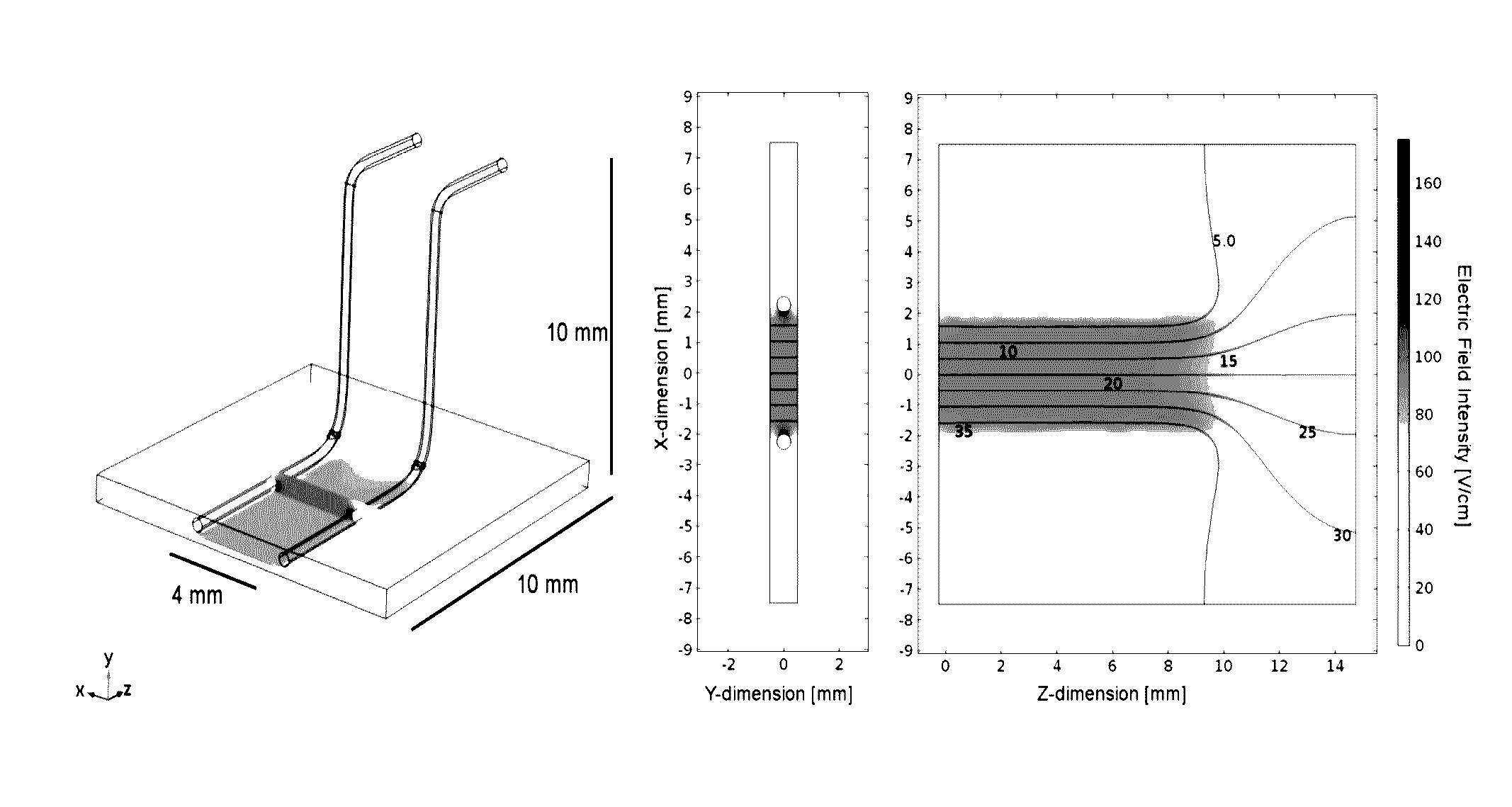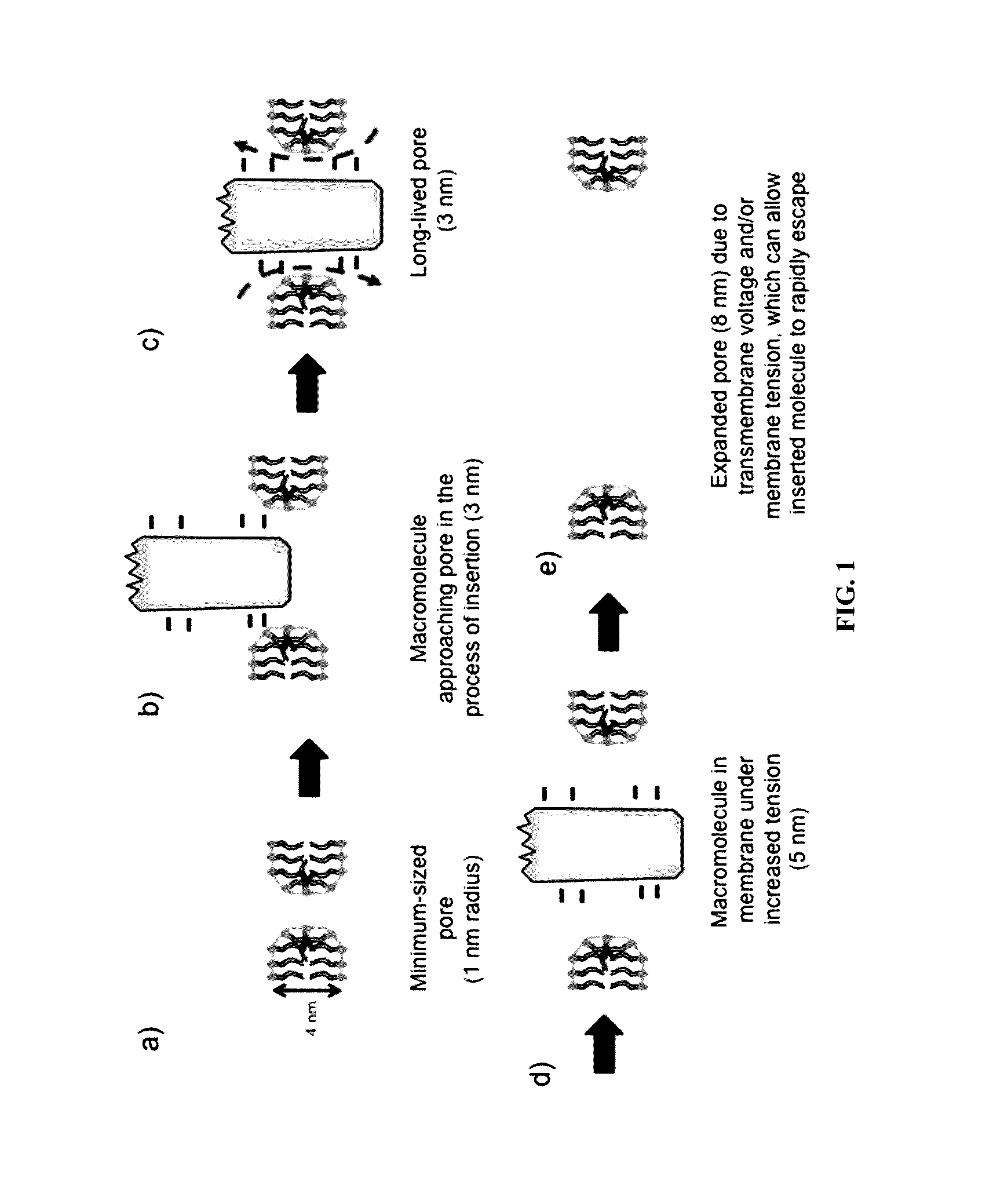Methods for inducing electroporation and tissue ablation
a tissue ablation and electroporation technology, applied in the field of electroporation and tissue ablation, can solve the problems of increasing complexity and realism, ineffective and incomplete purely experimental approaches, and poorly understood electroporation field stimulation of cells, and achieves low energy permeability, effective induces cytosolic components, and high permeability state
- Summary
- Abstract
- Description
- Claims
- Application Information
AI Technical Summary
Benefits of technology
Problems solved by technology
Method used
Image
Examples
example 1
Long Lived Pores (LLP) and the High Permeability State
[0083]The high permeability state involves three phases of poration and involves exploiting intra- / extracellular osmotic pressure differences so that the electrical stimulus (and heating effects) can be smaller, and the change in permeability can be large. A model for the high permeability state is shown in FIG. 2. LLPs are involved as they allow EP to trigger mechanoporation (MP). The conceptual model is supported by quantitative simulations using an approximate cell model that includes dynamic EP with both TPs (traditional transient pores) and the LLPs. The initial simulations support the complex sequence of:
[0084]Phase 1: 40 microsecond EP pulse
[0085]Phase 2: Intervening time in which most TPs vanish, and about 100 LLPs survive. These LLPs supply / remove Na+, K+ and Cl− ions, causing a change in the cell osmotic pressure difference.
[0086]Phase 3: After some time, there is a nonlinear acceleration in LLP expansion, and then new ...
example 2
Cells can be Electroporated Using a Single Electrical Pulse
Methods
1. Cell Treatments in Microfluidic Chambers
[0128]Data were obtained from two experimental setups: in a microfluidic device and in a growth chamber. Within the microfluidic device, Chinese hamster ovarian (CHO) cells were seeded at a density between 2-5×106 cells / mL inside a microfluidic chip and allowed to adhere overnight. The channel height is approximately 90 μm and tapered along its length (approximately 3-4 cm) to generate a continuous electric field gradient across the length of the channel (FIG. 11). It was observed that a cell leakage event (FIG. 12) occurred over time and that it always preceded a large fluorescent intensification when it occurred. When quantified for each treatment, these leakage events occurred with increasing frequency as the electric field intensity was increased, above a certain threshold (FIG. 12). The observed leakage events occur differently, even under similar treatment times, using ...
PUM
 Login to View More
Login to View More Abstract
Description
Claims
Application Information
 Login to View More
Login to View More - R&D
- Intellectual Property
- Life Sciences
- Materials
- Tech Scout
- Unparalleled Data Quality
- Higher Quality Content
- 60% Fewer Hallucinations
Browse by: Latest US Patents, China's latest patents, Technical Efficacy Thesaurus, Application Domain, Technology Topic, Popular Technical Reports.
© 2025 PatSnap. All rights reserved.Legal|Privacy policy|Modern Slavery Act Transparency Statement|Sitemap|About US| Contact US: help@patsnap.com



